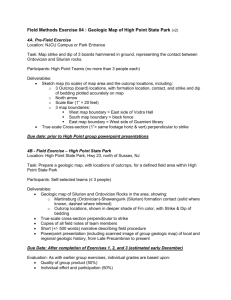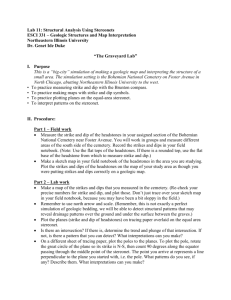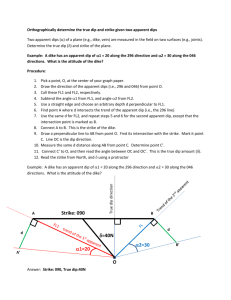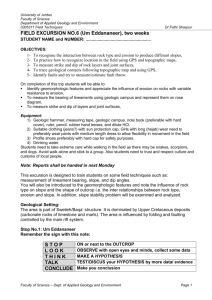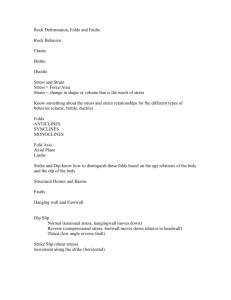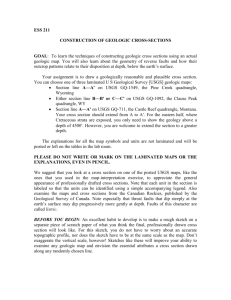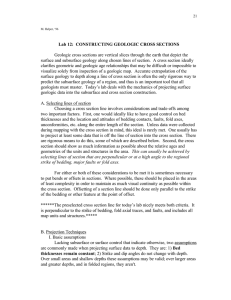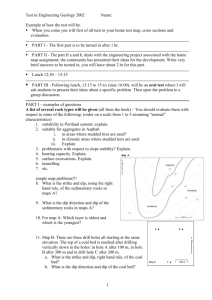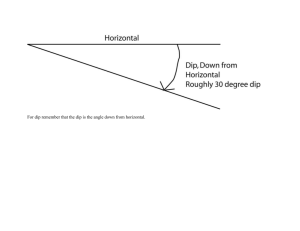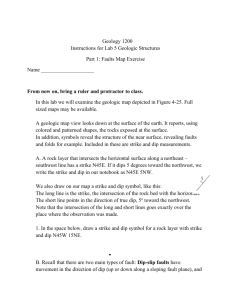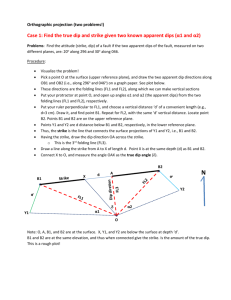GLG310 Structural Geology
advertisement
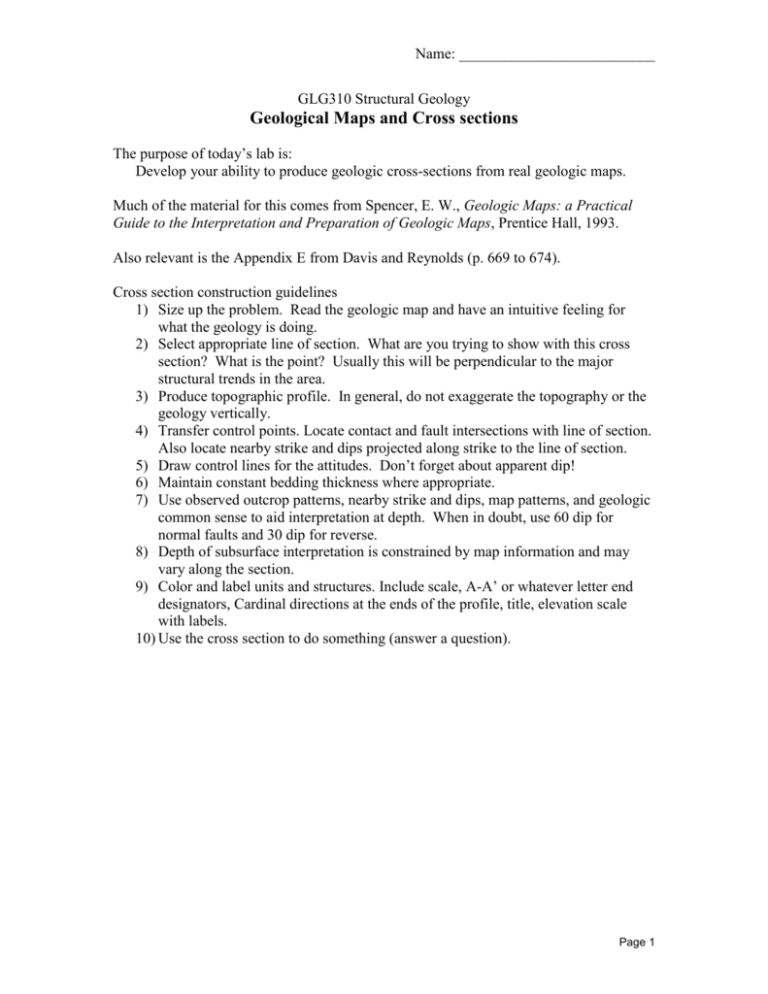
Name: __________________________ GLG310 Structural Geology Geological Maps and Cross sections The purpose of today’s lab is: Develop your ability to produce geologic cross-sections from real geologic maps. Much of the material for this comes from Spencer, E. W., Geologic Maps: a Practical Guide to the Interpretation and Preparation of Geologic Maps, Prentice Hall, 1993. Also relevant is the Appendix E from Davis and Reynolds (p. 669 to 674). Cross section construction guidelines 1) Size up the problem. Read the geologic map and have an intuitive feeling for what the geology is doing. 2) Select appropriate line of section. What are you trying to show with this cross section? What is the point? Usually this will be perpendicular to the major structural trends in the area. 3) Produce topographic profile. In general, do not exaggerate the topography or the geology vertically. 4) Transfer control points. Locate contact and fault intersections with line of section. Also locate nearby strike and dips projected along strike to the line of section. 5) Draw control lines for the attitudes. Don’t forget about apparent dip! 6) Maintain constant bedding thickness where appropriate. 7) Use observed outcrop patterns, nearby strike and dips, map patterns, and geologic common sense to aid interpretation at depth. When in doubt, use 60 dip for normal faults and 30 dip for reverse. 8) Depth of subsurface interpretation is constrained by map information and may vary along the section. 9) Color and label units and structures. Include scale, A-A’ or whatever letter end designators, Cardinal directions at the ends of the profile, title, elevation scale with labels. 10) Use the cross section to do something (answer a question). Page 1 Name: __________________________ Part 1: Reminder of Apparent dips Only if the line of cross section is perpendicular to the strike of a bed will the cross section show the true dip. All other dips are apparent dips! Let’s consider the dipping layer in the semi-transparent octagon: To determine the Apparent dip, we can do it a number of ways (graphical, trigonometric, nomogram (see below), and stereonet). We will use the trigonometric and the nomogram methods for convenience. The nomogram is shown on the next page and also is in the text book on page 672 of Davis and Reynolds. The trigonometric solution is often very convenient: Tan = tan sin Where is the apparent dip (in the line of section), is the true dip, and is the angle between the line of strike and the line of interest (section). Page 2 Name: __________________________ Here is how to implement the trig solution in Excel: Or: =degrees(atan(tan(radians(B2))*sin(radians(B3)))) Page 3 Name: __________________________ Here is another way to look at it Let’s determine the apparent dip for the octagon and check the calculations for the figure above using both methods. Part 2: Review of the lab from two weeks ago and what the correct answer looks like. Here is a reminder of what the plunging folds will look like: Page 4 Name: __________________________ Part 3. Cross section of nearly horizontal folds at the Wildwood Quadrangle, Tennessee. We will do A-B together. You will turn in C-D next week. Hints: Note the bend in section (just follow the line along and so you will have to rotate your paper slightly for each portion). Qa is very thin so you can effectively ignore it. You have to balance the crest height or trough depth of the folds with constant thickness and obeying the tips. Adjust among the three to come up with the best section. Optional and not done this year: Part 4. Cross section of faults and layers in the Orem Quadrangle, Utah We will do C-D together. You can determine the dip of the thrust near F. You will turn in E-F next week. Part 5: Cross section of faults and metamorphic rocks and igneous intrusions in the Paradise Quadrangle, Nevada Page 5
